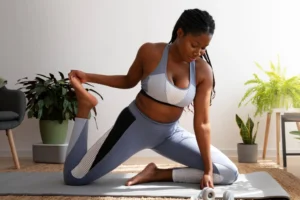Walking is an important locomotor skill and used in everyday activities like walking to market or job, used in sports, in play and dance activities.
Walking is the transfer of weight from one foot to the other while moving forwards or backwards, the arms swing freely in opposite directions, and one foot is always in contact with the ground.
Walking is considered as a convenient activity and may be accommodated in ocupational and domestic routines. It is self regulated in intensity, duration and frequency. Studies have shown that walking has higher levels of involvement than other exercises of physical activity, possibly because it is convenient and overcomes many of the commonly perceived barriers to physical activity: lack of time and lack of fitness.
Remember your first step? What a fuss everyone made! And then you continued to walk right on through childhood, adolescence, and into adulthood, but somewhere along the way, like most adults, you probably stopped walking so much. Most adults spend most of their day sitting as many as 6.5 hours. Part of the reason may be your hectic, stressful lifestyle, without a moment to spare for recreation or formal exercise.
The environment plays a part too; inactivity has been engineered into our lives, from escalators to remote controls to riding lawnmowers to robotic vacuum cleaners to electric toothbrushes to the disappearance of sidewalks and safe places to walk.
The rate at which people engage in walking has declined steadily all over the world during the last decade, because of evolution of the transportation and manufacturing of elevators and electrical stairs.
Why Walking is Accessible and Convenient:
1) Walking is free, this mean you do not to need expensive gym membership or special
shoes to take part.
2) You can wear your daily clothes that you like so you do not feel uncomfortable.
3) Walking is safe, so you are unlikely to get injured.
4) It’s fun to go with your friends for a walk.
5) Walking is a healthy way to go where you need be.
6) You can be walking almost anywhere at any time.
7) Walking is a great ‘gateway’ to the world of exercise, because it often inspires people to try out other activities
The Health lmpact of Walking:
There are many health benefits of walking, and exercise walking is so very easy:
1) Achieve and Maintain a Healthy Weight:
Brisk Walking reduces your body fat, increases lean muscle tissue, burns calories and improves metabolism. Walking can help you to achieve long-lasting weight control, combined with a healthy lifestyle and nutritious eating.
A brisk 30-minute walk burns 200 calories. Over time, calories burned can lead to pounds dropped.
2) Regulates Blood Pressure and Cholesterol Levels:
Regular walking can also help lowering
high blood pressure, decreasing low density lipoprotein (LDL) cholesterol and increasing
high density lipoprotein (HDL) instead of taking risky medications with unpleasant side
effects.
3) Manage and Reduce Diabetes Risk:
Daily Walking progresses your body’s natural ability to process sugar (glucose tolerance) and to maintain a healthy weight. This help to prevent or even reverse the effect of type 2 diabetes.
4) Lower Risk of Heart Attack and Stroke:
Walking helps to improve your heart health and decrease your risk of heart attack and stroke. 30 minutes of walking daily greatly improves your circulation and helps keep your heart and blood vessels healthy.
5) Decreases Stress and prevent Depression:
Regular exercise walking is a great way to improve your mood, breathing, to reduce stress, anxiety and depression by improving circulation and stimulates the nervous system receptors and decreases the production of stress hormone.
6) Stay strong, Active and Healthy as You Age.
As you age, exercise walking can improve your stamina and keep you fit. Walking exercise strengthens bones, muscles and joints, helps prevent falls and hip fractures, improves your immune system and extends your life expectancy.
7) lmproves Digestion:
Walking after meals helps you reduce weight and supports your digestive system, and reduce the risk of colon cancer, diarrhea, etc
8) Lightens Your Mood:
Walking releases natural painkilling endorphins to the body, one of the emotional benefits of exercise. The more steps people took during the day, the better their moods were.
9) Enhance Your Respiratory System:
When you are walking, your breathing rate increases, causing oxygen to travel faster through bloodstream, helping to eliminate waste products and improve your energy level and the ability to heal.
Conclusion:
What’s not to like about walking? It’s free. It’s easy to do, and it’s not just easy on joints but it also keeps them lubricated and flexible. A study found that women who walked had less body fat than those who didn’t walk. It also lowers the risk of blood clots, since the calf acts as a venous pump, contracting and pumping blood from the feet and legs back to the heart, reducing the load on the heart. In addition to being an easy aerobic exercise, walking is good for you in many other ways.
In closing, we encourage you to set walking targets daily and begin to enjoy the benefits of this great and underrated form of exercise.





